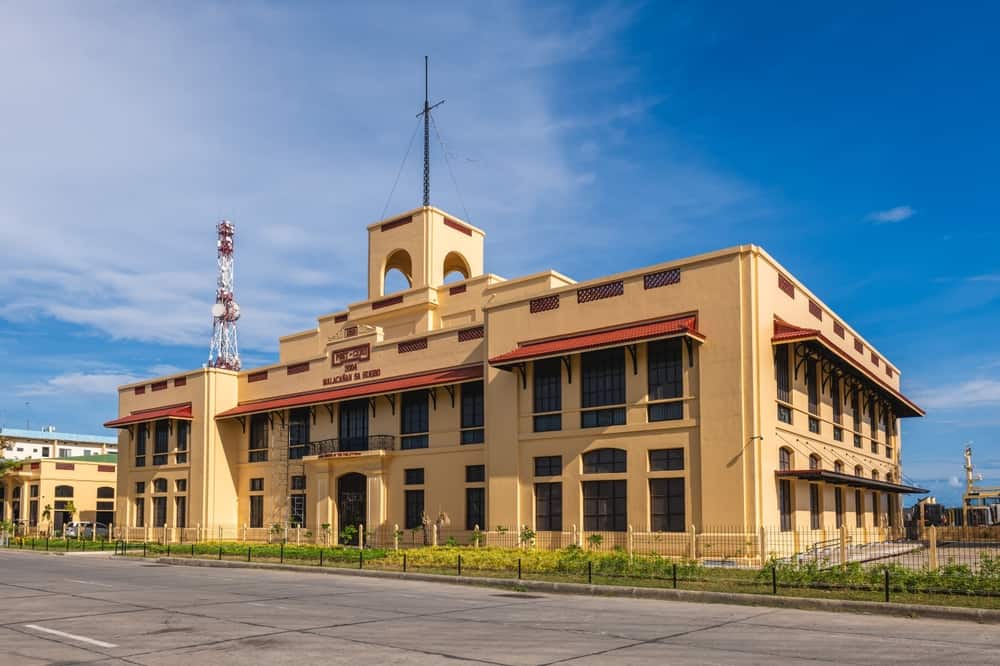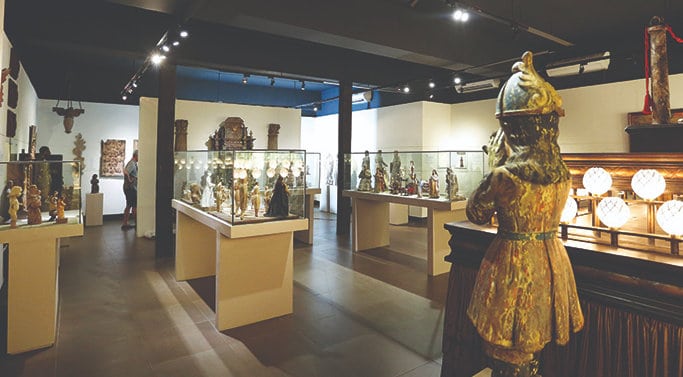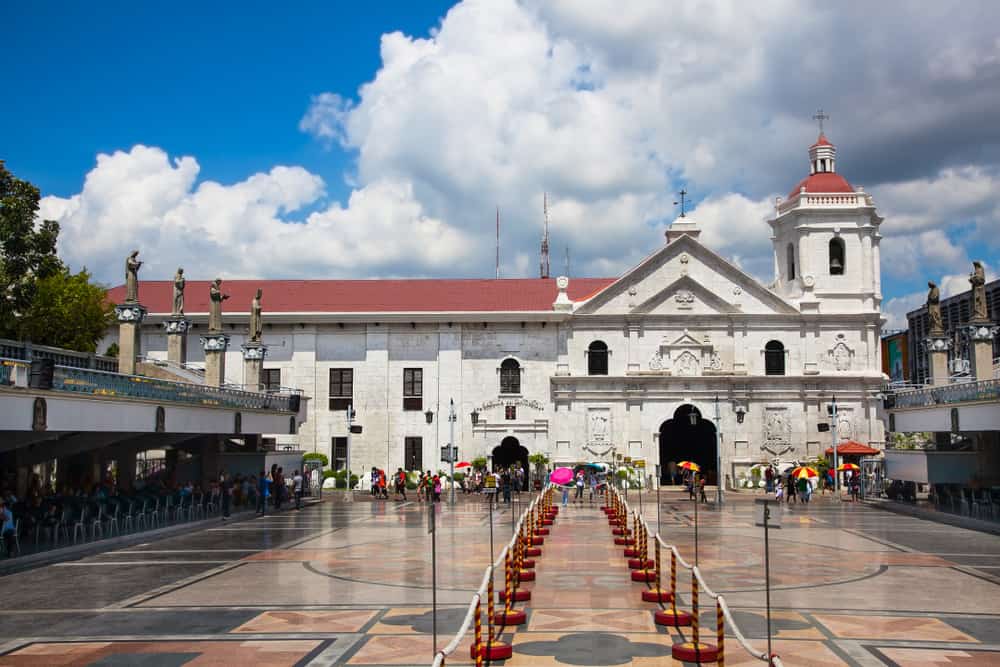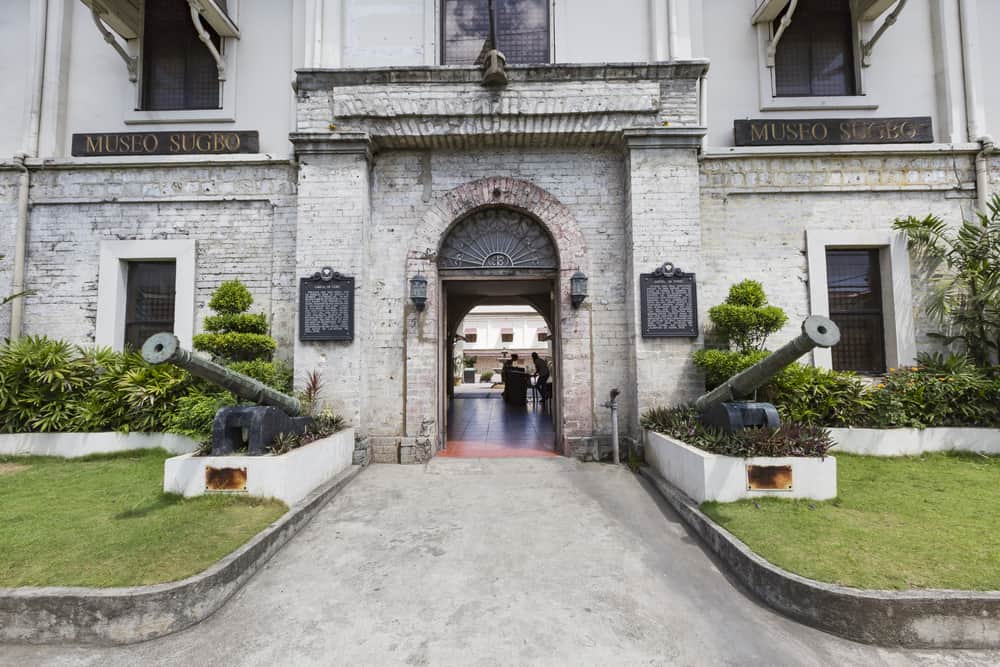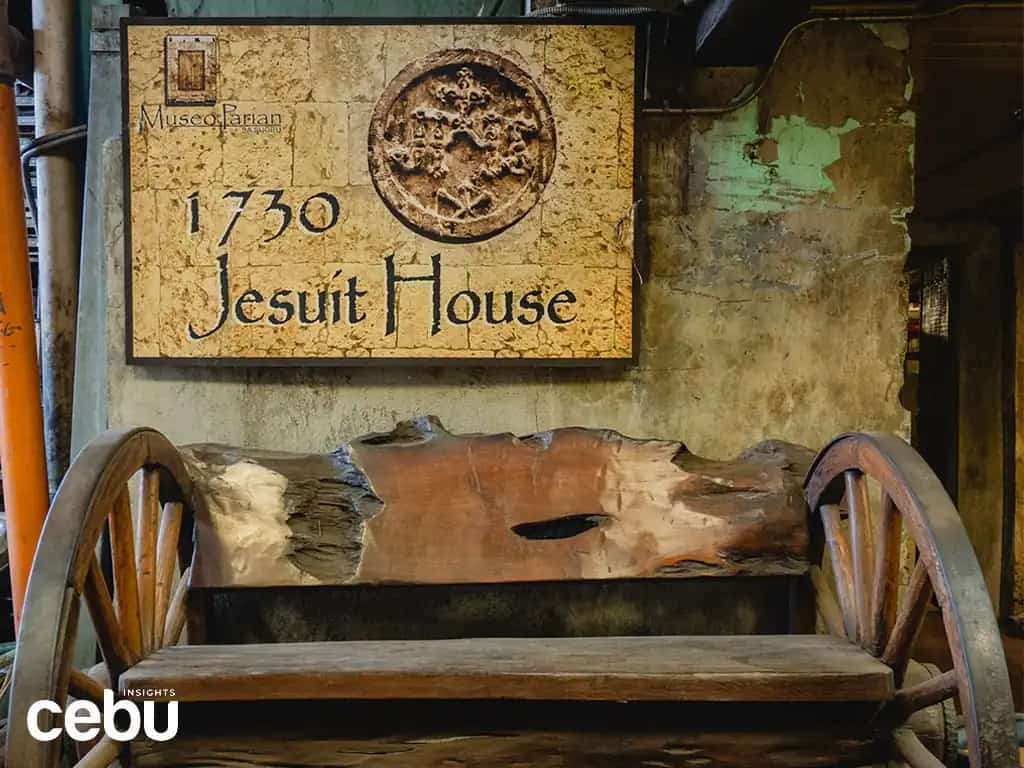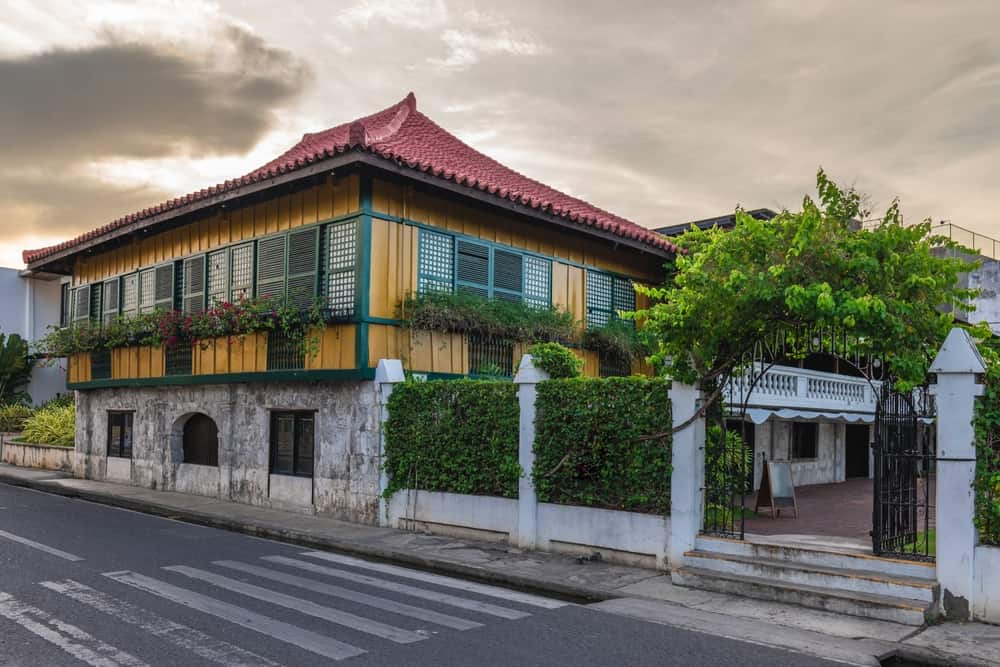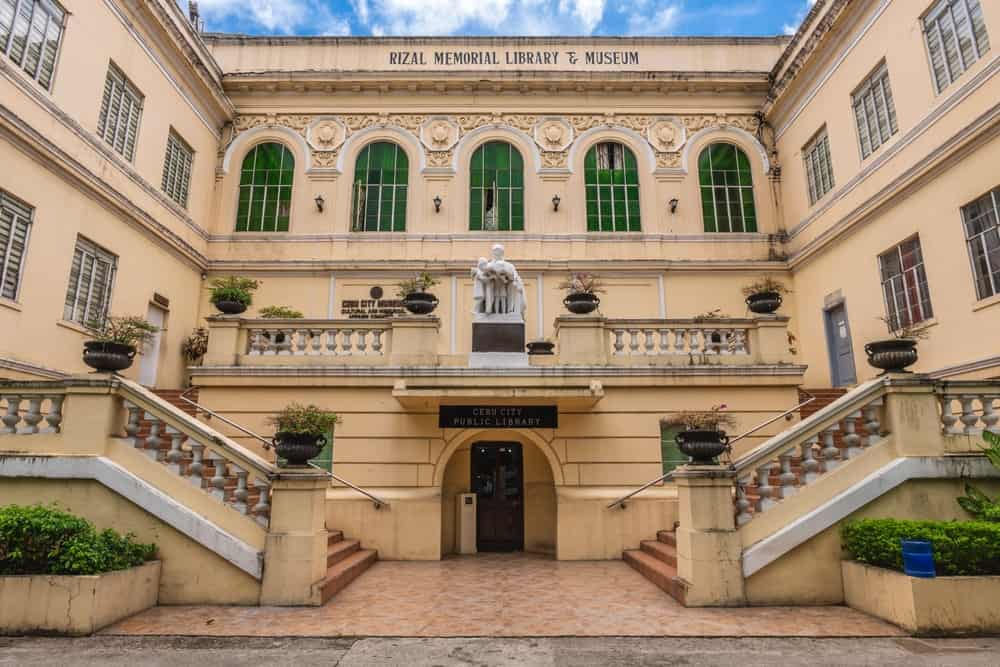Whether you’re a history enthusiast, an art lover, or someone with insatiable curiosity, museums in Cebu promise a voyage through time and creativity you won’t want to miss. This article walks you through the seven must-visit museums in Cebu for an unforgettable and enlightening adventure.
Museums in Cebu that are Worth Visiting
Cebu’s captivating museums tell stories of the island’s past. From the grand halls of the National Museum to the quaint charm of Casa Gorordo Museum, each site presents a unique facet of Cebu’s heritage. These cultural hotspots make living in Cebu more exciting. Here’s every Cebu museum you should add to your must-visit list.
1. National Museum of the Philippines in Cebu
Address: Quezon Boulevard, Pier Area, Cebu City
Operating hours: Tuesday to Sunday: 9:00 AM – 5:00 PM
Admission fee: Free
The National Museum of the Philippines in Cebu (NMP-Cebu) recently opened its doors on Aug. 1, 2023. Situated in the city’s bustling shipping district, this art museum in Cebu boasts five distinctive galleries that capture the rich history, culture, and natural marvels of Cebu.
The first gallery, “Kinaiyahan: Cebu’s Natural Wonders,” showcases the region’s unique geological formations and endemic plant and animal species. The second gallery, “Ang Karaang Sugbo ug ang mga Kabiling Bahandi,” explores Cebu’s past by examining significant archaeological finds.
The third gallery, “Paglawig: Cultural Movement Across the Seas,” stages the maritime history and industry that were pivotal in shaping Cebu’s identity. Meanwhile, the fourth gallery, “The Philippine Center New York Core Collection of 1974,” presents artworks by prominent Filipino artists from the early 1970s, offering a window into the era’s vibrant artistic scene.
Finally, the fifth gallery, “Ang Kamamugnaon ug Kinaadman ni Maestro Tinong,” pays homage to the renowned Cebuano artist Martino “Tinong” Abellana, exhibiting his extraordinary body of work and celebrating his artistic legacy.
2. University of San Carlos Museum
Address: P. del Rosario Street, Cebu City
Operating hours: Monday to Friday: 8:30 AM – 5:30 PM; Saturday: 8:00 AM – 12:00 PM; closed on holidays
Admission fee: Free
Featuring multiple galleries, the University of San Carlos Museum is home to Cebu’s religious and academic history. The original trio of galleries, encompassing Biodiversity, Archaeology, and Ethnography, is in the south wing. Also in this area is the Open Gallery, which serves as a space for temporary and special exhibitions. The hallway section houses the USC Institutional History Exhibition.
On the other hand, the north wing is exclusive to the Rosita R. Arcenas collections. These include two prominent exhibitions: “Bahandi: The Rosita R. Arcenas Collection of Chinese and Southeast Asian Ceramics” and “Handumanan: The Rosita R. Arcenas Collection of Bisayan Santos.” This division in the museum’s layout allows for a comprehensive exploration of diverse exhibits and thematic showcases.
3. Basilica Minore del Santo Niño Museum
Address: Santo Niño Pilgrim Center, Osmeña Blvd. cor. P. Burgos St., Cebu City
Operating hours: Daily (except Wednesday): 8:00 AM – 11:45 AM and 1:30 PM – 4:45 PM
Admission fee:
- PHP 30 – adults
- PHP 15 – senior citizens
- PHP 10 – students and children
What began as a collection of vestments and offerings to Santo Niño grew into what is now the Basilica Minore del Sto. Niño Museum. The growing influx of visitors, devotees, and collections pushed its relocation to a more spacious setting, the basement of the Santo Niño Pilgrim Center.
The museum’s primary mission is to enlighten individuals about the origins, historical context, and significant events tied to the formal Christianization of the Philippines, all centered around Señor Santo Niño de Cebu.
4. Museo Sugbo
Address: #731 M.J. Cuenco Ave., Cebu City
Operating hours: Monday to Friday: 9:00 AM – 4:30 PM
Admission fee:
- Adults – PHP 30 (Filipinos), PHP 75 (Foreigners)
- Students – PHP 10 (Filipinos), PHP 50 (Foreigners)
- Senior Citizens – PHP 10
Museo Sugbo resides within the former Cebu Provincial Detention and Rehabilitation Center (CPDRC), once known as “Carcel de Cebu.” Four distinct galleries present various facets of Cebu’s history. The political history gallery unfolds the nation’s political evolution narrative, tracing its roots from early Filipino groups to the contemporary era.
Meanwhile, the presidential gallery proudly displays portraits and signatures of Philippine presidents, meticulously engraved on 24-karat gold-plated metal. The remaining two galleries display archaeological wonders unearthed from Cebu’s excavations.
There are also captivating artifacts, including gold and ceramics from the renowned San Diego shipwreck in 1600. Adding a touch of mystique to the experience, the museum has the “Well of Wisdom, Love, and Good Fortune,” a wishing well believed to be the water source for the Visayas District’s prison complex during the Spanish colonial period.
5. Jesuit House
Address: #26 Zulueta Street, Parian District, Cebu City
Operating hours: Monday to Saturday: 8:00 AM – 12:00 PM, 1:00 – 5:00 PM
Admission fee:
- PHP 100 – adults
- PHP 50 – students
The Jesuit House Museum, or Museo De Parian, is a bahay-na-bato transformed into a museum. Its construction dates to 1730. The museum offers diverse galleries highlighting Filipino-Chinese culture alongside a collection of antiques, pre- and post-World War 2 items, and religious artifacts.
Interestingly, the museum’s setting has scattered hardware materials and supplies because it’s nestled within the compound of Ho Tong Hardware’s warehouse. Plus, the museum replicates the structures of old Colon Street, providing visitors with a vivid experience of strolling through Colon during the Spanish colonial era.
6. Casa Gorordo Museum
Address: #35 Eduardo Aboitiz St., Cebu City
Operating hours: Monday to Saturday: 9:00 AM – 5:00 PM
Admission fee: PHP 75
From the 1850s, the Gorordo House witnessed the lives of four generations of the family, including Juan Gorordo, the first Filipino bishop of Cebu. Remarkably, this historic residence survived two revolutions in the late 1800s and early 1900s and withstood the ravages of the Second World War.
Casa Gorordo showcases colonial-era architecture, a fusion of native, Spanish, and Chinese influences. Locals refer to it as “balay nga tisa,” or house with a tiled roof. Casa Gorordo offers museum-based activities, including enjoyable craft learning sessions, engaging cultural events, enlightening forums, and educational tours.
7. Rizal Memorial Library and Museum
Address: #102 Osmeña Blvd., Cebu City
Operating hours: Monday to Saturday: 8:00 AM – 12:00 PM, 1:00 PM – 5:00 PM
Admission fee: Free
Many individuals, including Cebu’s residents, overlook this exquisite pre-World War 2 structure along bustling Osmeña Boulevard. Named after the country’s national hero, Jose Rizal, this building boasts a ground floor housing the public library, while a museum is on the second floor.
This museum has been around since 1992 and has a remarkable collection of woodcarvings, furniture, sculptures, and antiques generously donated by esteemed Cebuano families. Additionally, there are portraits depicting prominent Cebuano figures and captivating artwork featuring landscapes, flora, and intricate murals.
Unveiling More of Cebu
The Queen City of the South is a testament to its culture and rich history. From archaeological wonders at the National Museum to intimate insights into colonial life at Casa Gorordo, these museums offer an invaluable journey through time and artistry. As you explore Cebu, you’ll gain a deeper appreciation for its past and a keen understanding of its vibrant present.
If your journey through Cebu sparks a desire to explore real estate property here, consider Mandani Bay. This modern, luxurious condo for sale in Cebu promises a prime investment opportunity and a chance to immerse yourself in a dynamic city and an exceptional condo lifestyle.

